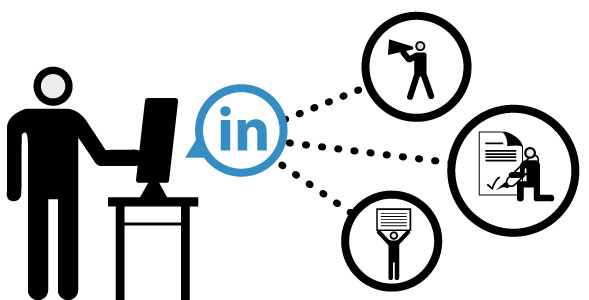
LinkedIn – The greatest Personal Branding, Publicity and Sales Tool for B2B markets.

There are 3 types of people in business:
- Entrepreneurs
- Intrapreneurs
- Un-enterprising and all of them can benefit from LinkedIn, even the un-enterprising!
It’s the often overlooked social media channel of LinkedIn! Whilst it is Facebook and Twitter that get all the media attention, it is LinkedIn that leads with results.
Hubspot research shows LinkedIn being the equal leading Customer Acquisition Channel together with Company Blogs and the definitive leader in the B2B segment.
“LinkedIn is the largest professional social network online today with an astounding 135 million users and a targeted audience of business professionals. If you are a business professional and you do not have a powerful presence on LinkedIn, you are undoubtedly missing valuable opportunities to connect and grow your business.”
– Rebecca Corliss is marketing manager and leader of the social media marketing team at Hubspot.
“There is no other social networking site in which you have a greater chance of being able to interact with an influential decision maker due to the business- focused nature of the community. LinkedIn remains one of the best social networking sites to market your business-to-business (b2b) products and services because of this special demographic. even for business-to-consumer (B2C) companies, LinkedIn is important: not only because consumers are members of LinkedIn, but also because the network offers a great platform for finding distributors, agents, and strategic alliances.”
– Neal Schaffer, author of Windmill Networking
I used to refer to LinkedIn as “Facebook for Business”, but how wrong I was!
The first 2 points provide a major difference between LinkedIn and Facebook and hence give business people an amazing opportunity not available in any other media channel:
1. LinkedIn provides a meeting place where people expect to “do business”
2. LinkedIn leverages relationships by making connections visible
3. LinkedIn helps maintain personal relationships and build new ones.
4. LinkedIn provides a platform for the most effective form of Marketing – Word of Mouth
5. It can link all your Online Marketing Assets and essential Social Media Tools, e.g: Website, Blog, Slideshare (now incorporating Video), Twitter and Facebook.
With all of the new developments in LinkedIn, today it can assist you with:
- Promoting your personal brand
- Proactive Networking
- Checking References and Backgrounds
- Look for a Job, Seek and Hire Candidates and be better prepared for interviews
- Generate Leads and Accelerate Sales
- Ask for Advice from your own network as well as “Crowdsource”
- Find Experts and Partners
- Improve your Personal Productivity with all of the different LinkedIn tools, Widgets, and Apps.
- Research trends and industries, gather opinions by running pols as well as track company news.
Finally and most importantly, LinkedIn can provide you with the perfect and simple platform for a Referral System! Referrals are critical to success in business.
FACT
– 98% of Businesses rely on referrals to gain new business*
FACT
– 3% of businesses have a strategy for referrals*
REFERENCE:
*BNI – Business Network International
Benefits of a Referral System:
- Lower Marketing Costs
- Higher Revenues
- Prospects convert to Customers
- Better customer ‘behaviour’
- You can concentrate on your business
Please note that there is a large and important difference between Word of Mouth Advertising and a Referral System. Word of Mouth or ‘going viral’, usually happens by chance. We as marketers try as we might do not have control over a video or a game going viral, and more fail than succeed!
A Referral System, on the other hand is:
- Predictable
- Consistent and
- Repeatable!
LinkedIn can assist you in most of the critical steps of a typical Referral Process:
- Identifying Referrers / Influencers in your Network by listening and studying where opinions are being shared
- Providing them with a WOW experience (LinkedIn won’t help you there – you need to be great at what you do or deliver exceptional value through your products and services!)
- Stay Top of Mind
- Help them Help You – you need to educate your network how to refer to you
- You need to ask for Referrals and Introductions
- And you need to Recognise and Reward those that place their trust in you and refer to you!
LinkedIn or any other technology or media channel for that matter will not help you Stand Out and Be Noticed!
You need to give people a reason to talk about your products and services, and make it easier for that conversation to take place. You’ll need to be creative and wow prospects and not just with your message. Remember the old adage – “great advertising kills bad products faster”
As with all social media or marketing activities in general, the more you put into them the more you will get back in return. The more you care and share the more likely you are to benefit. Check out this latest Infographic http://mashable.com/2012/02/08/new-content-marketing-tactics/
To learn about our LinkedIn courses check out http://www.qubepartners.com/promotion-media/social-media/linkedin.
Get LinkedIn or become LockedOut!

Recent Comments